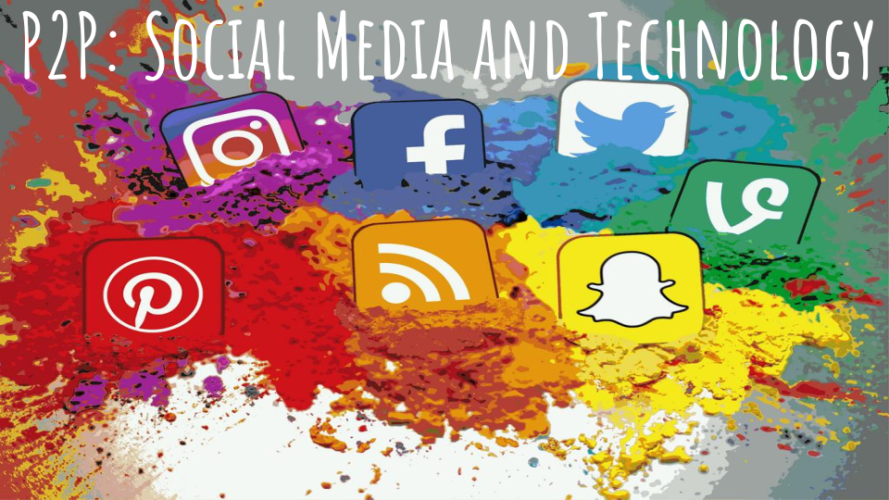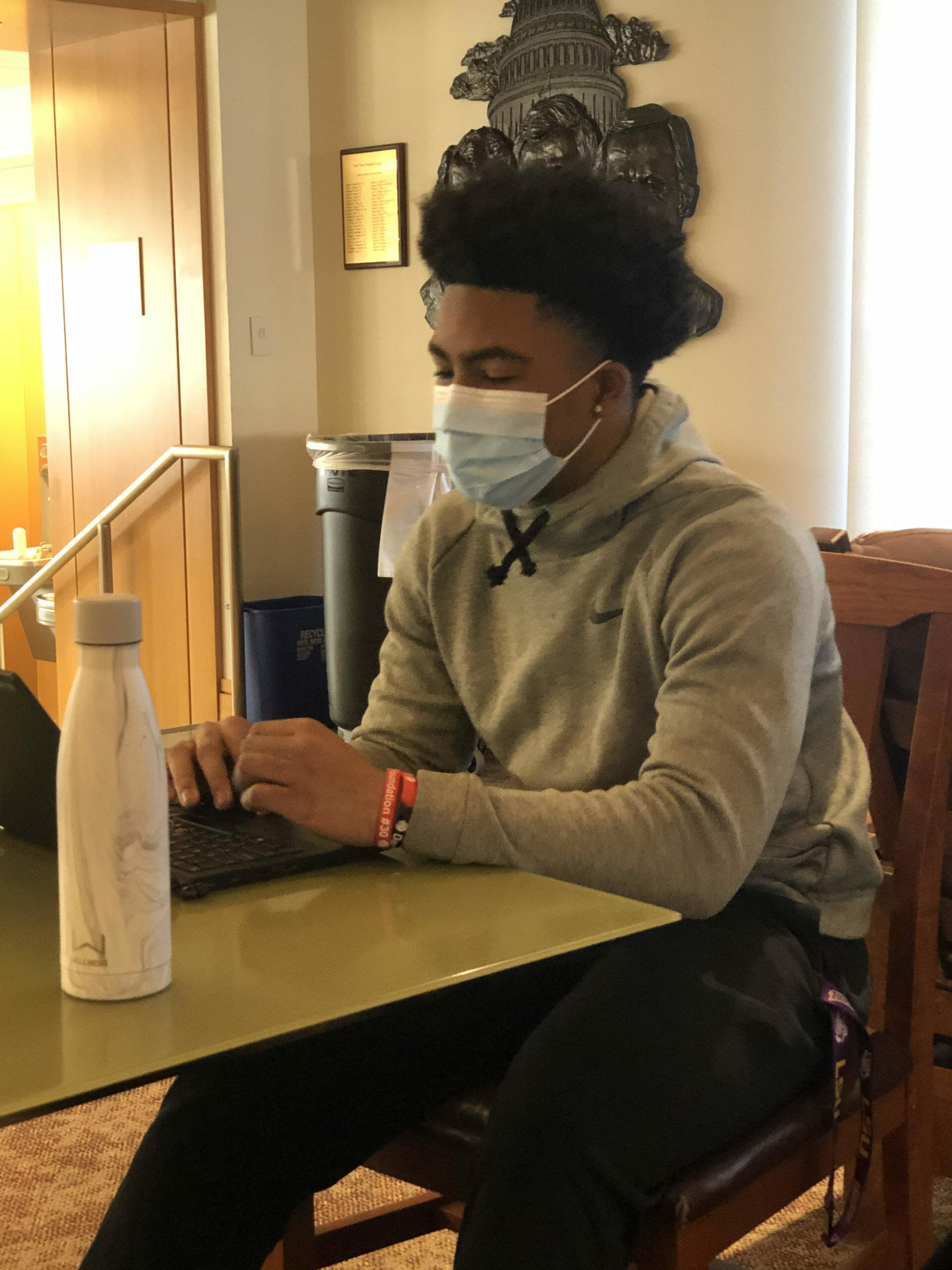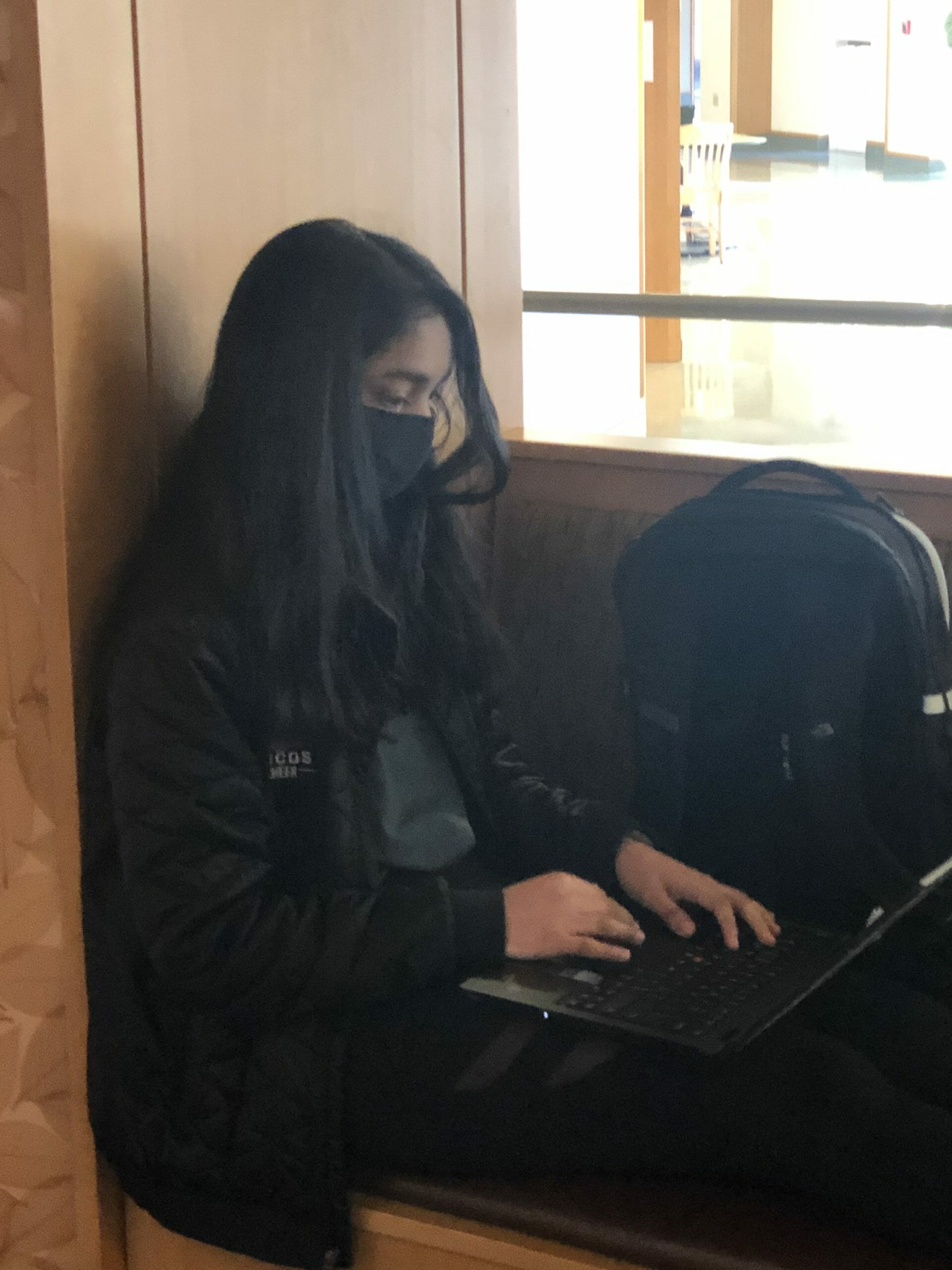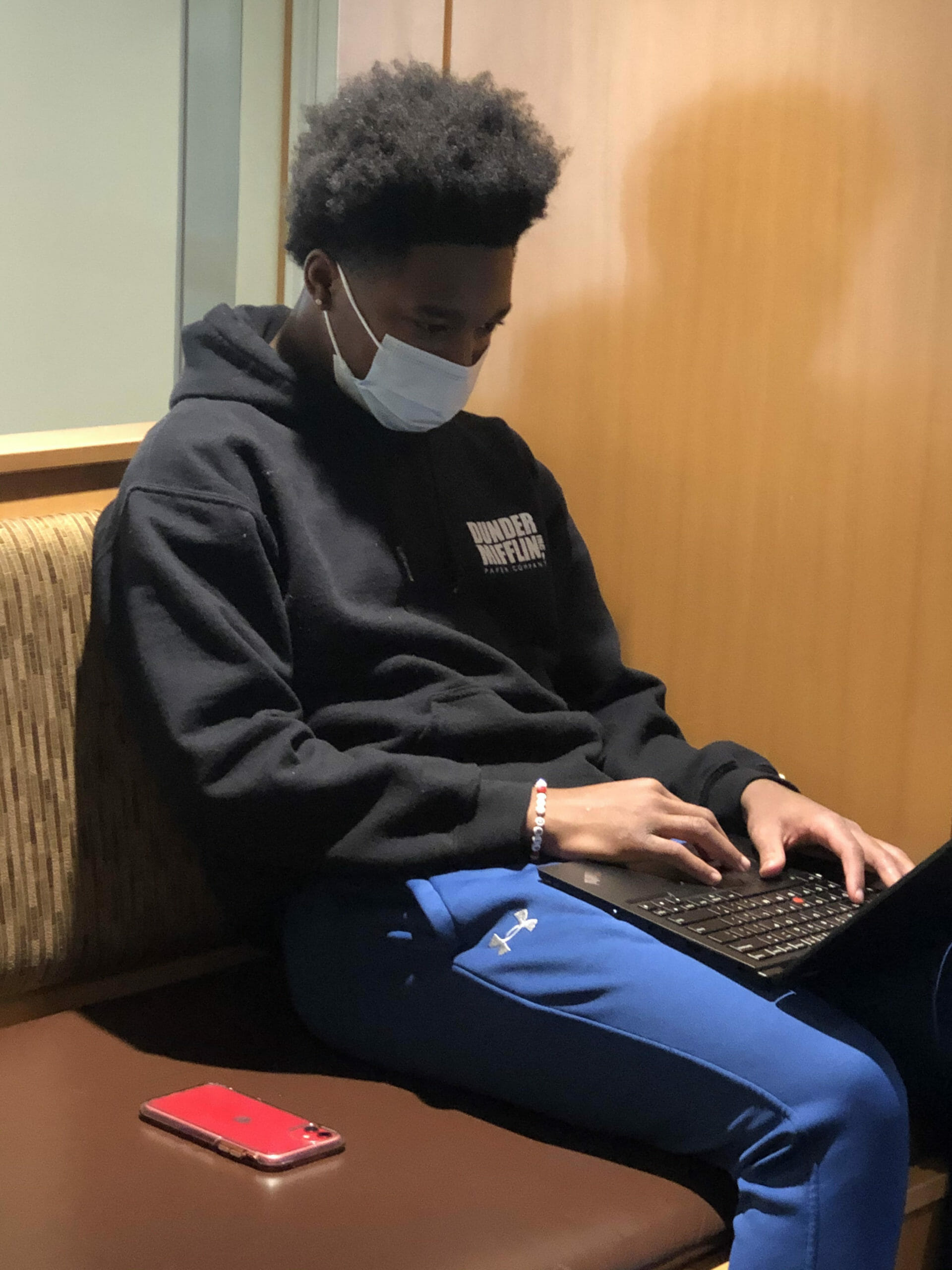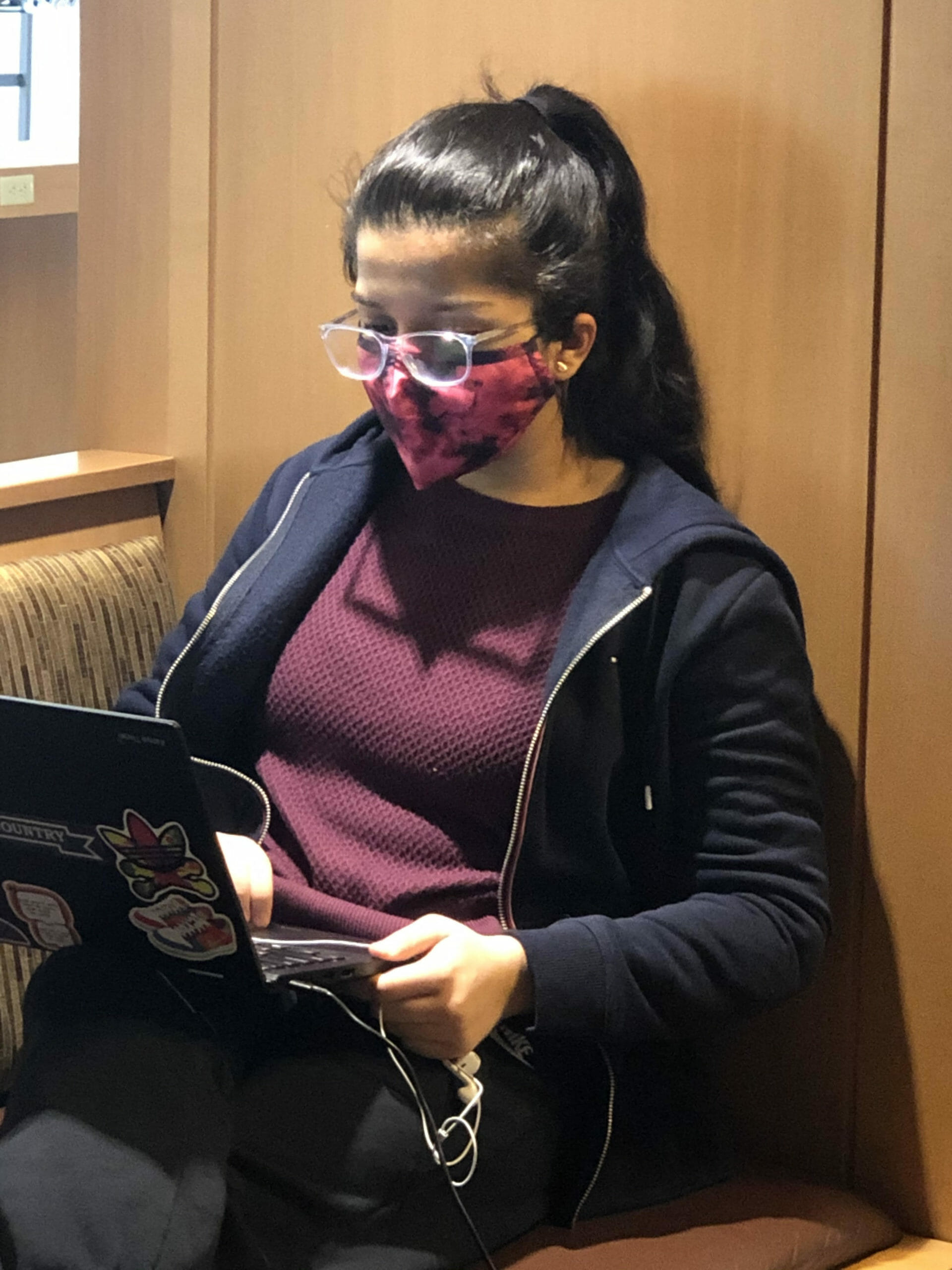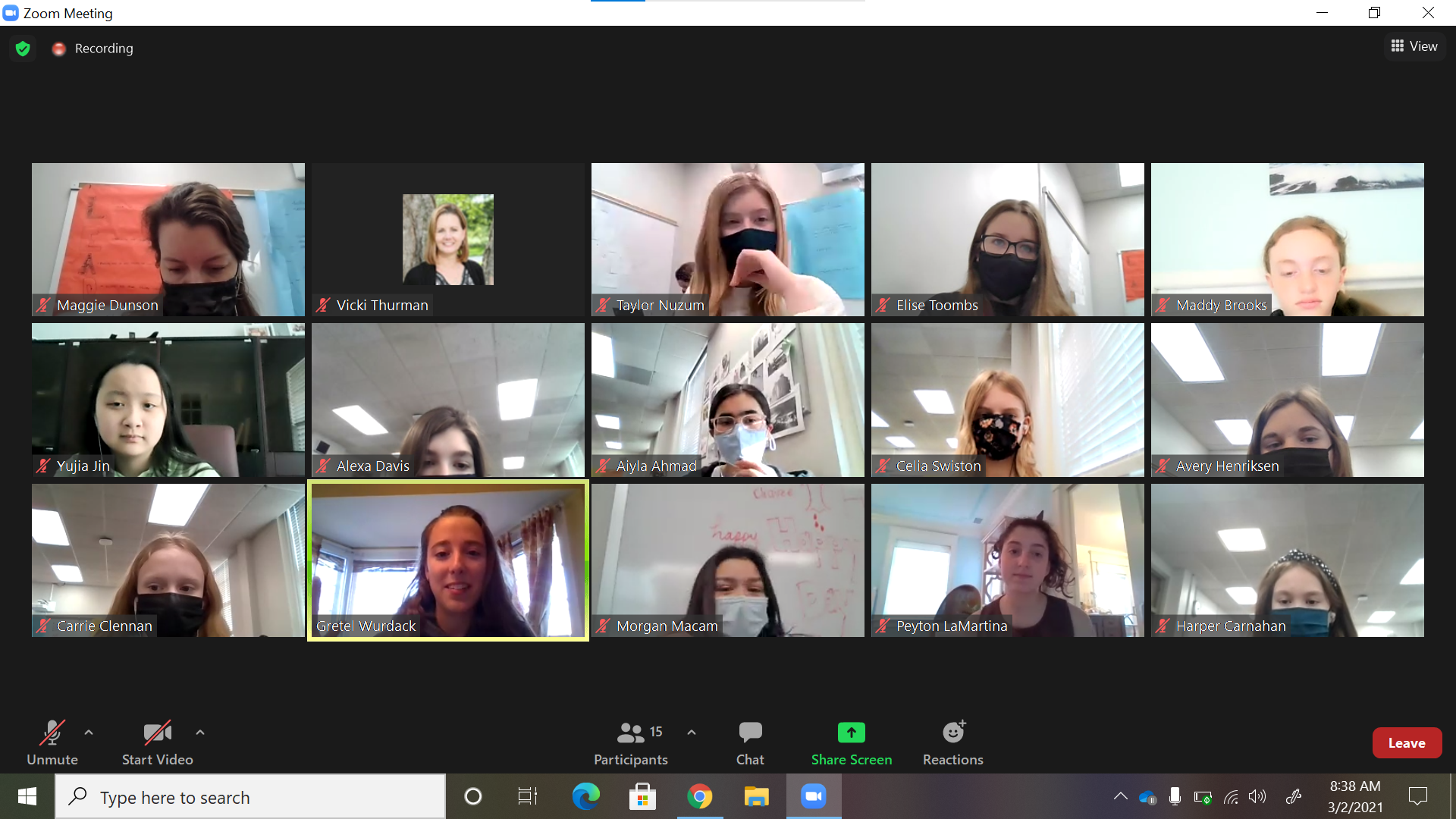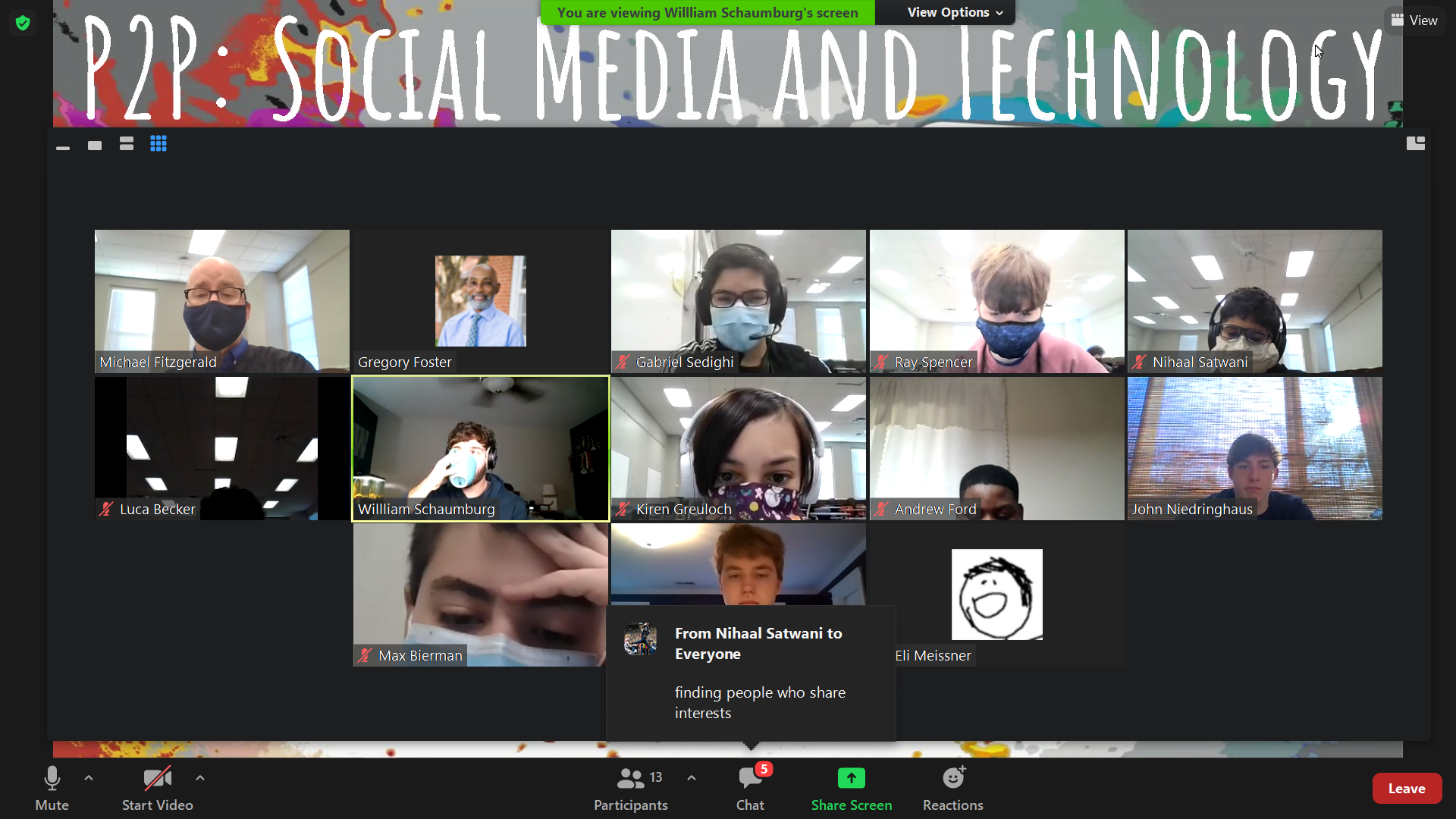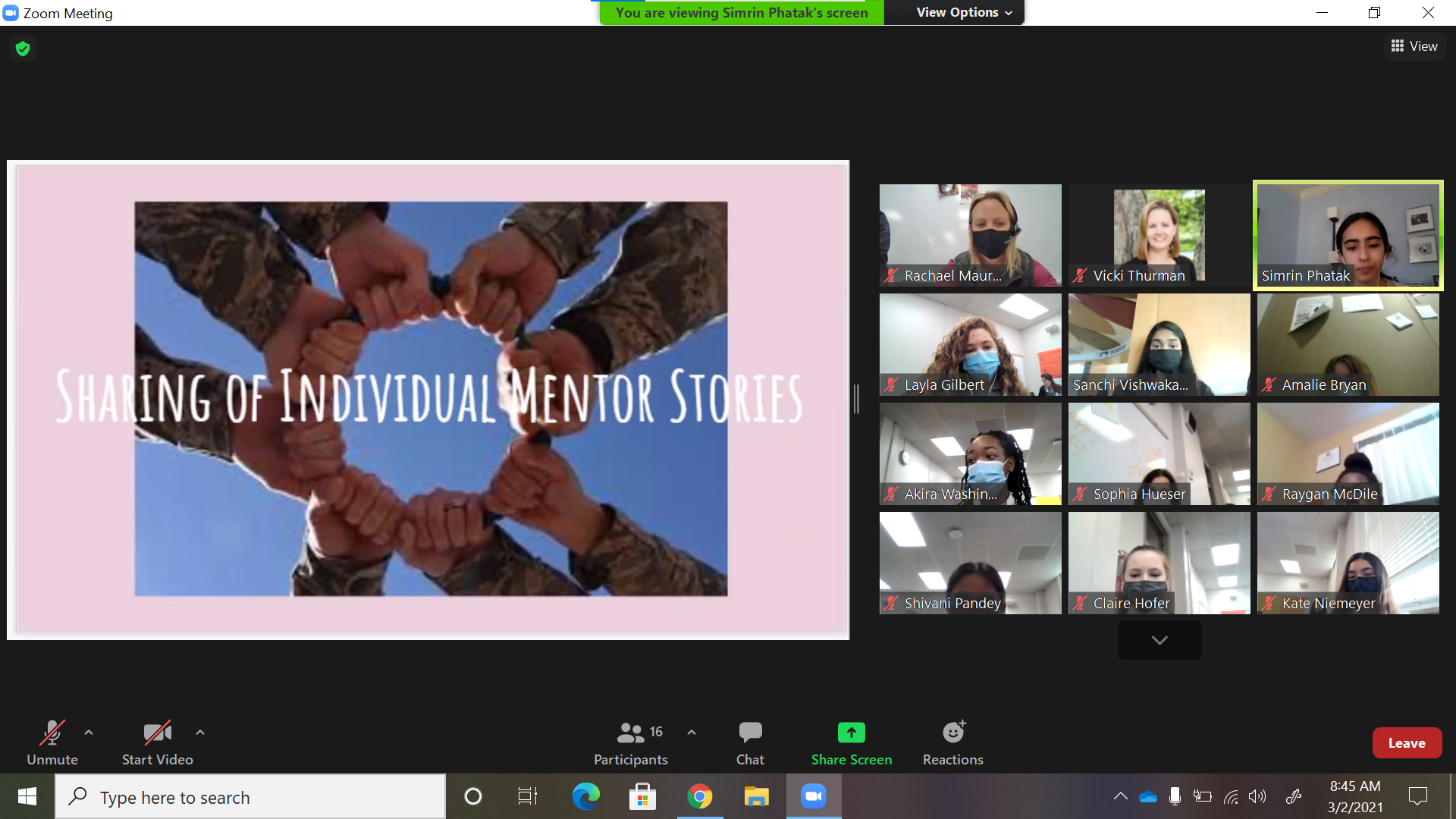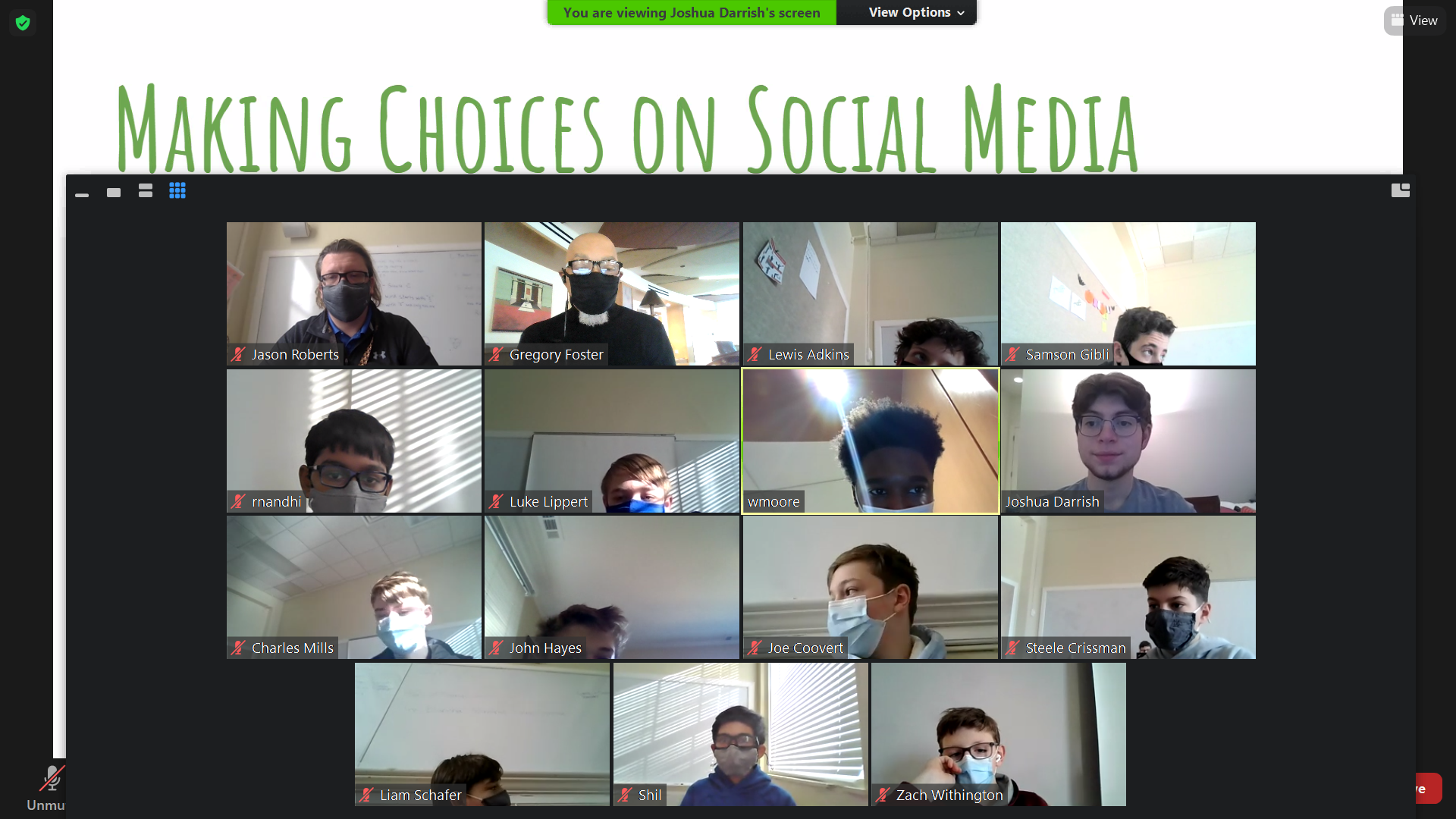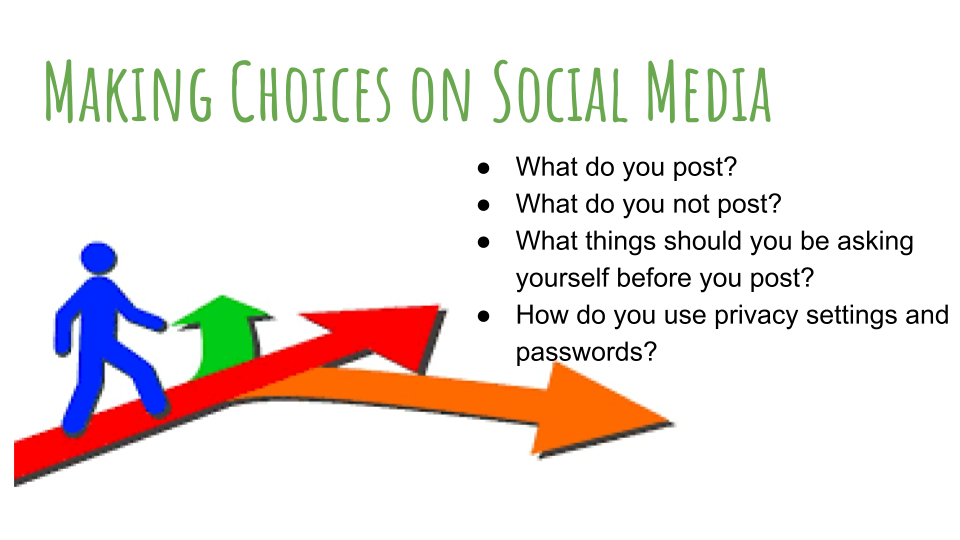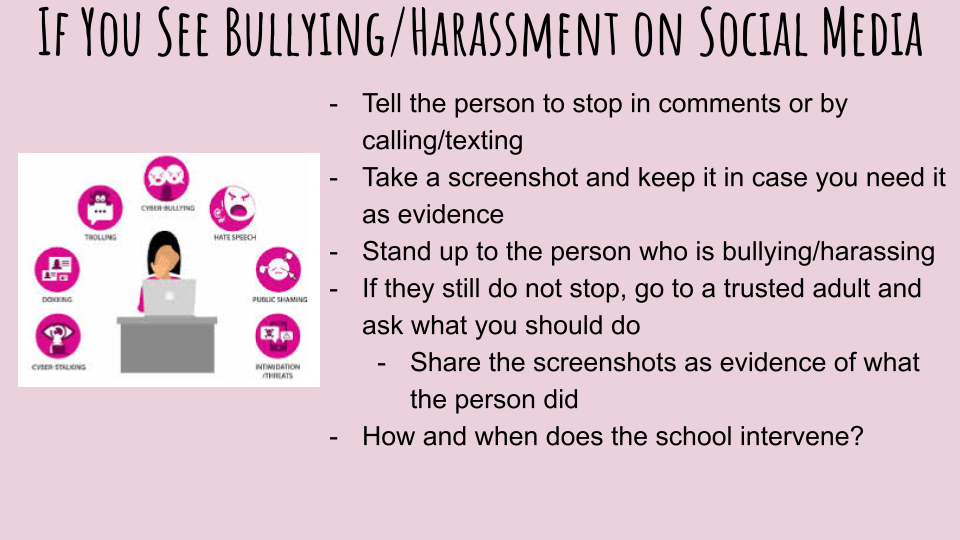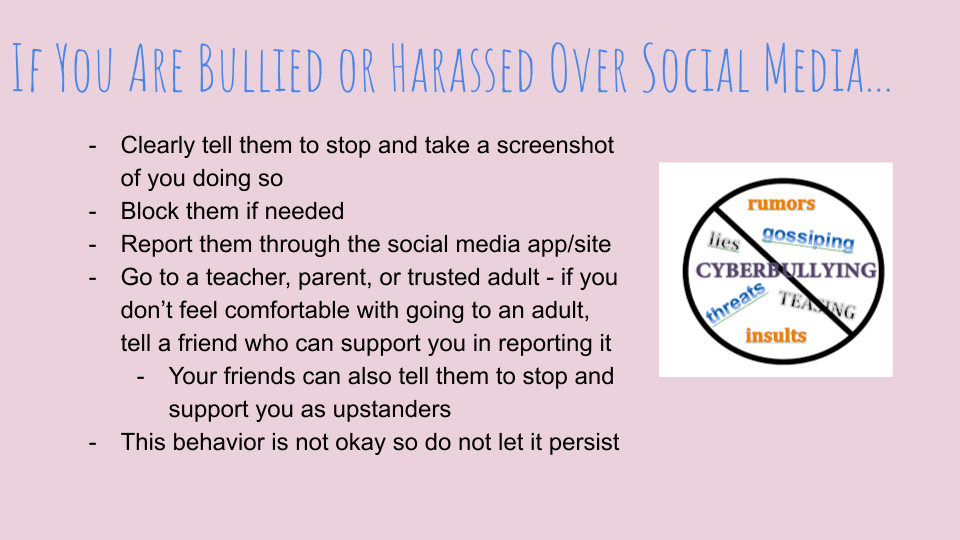Upper School students in the Peer-to-Peer Mentoring program have held five sessions this year with 7th graders. Topics range from stress and anxiety to healthy and unhealthy relationships, and last month they tackled the complex issue of technology and social media. A vital component of every session is when the mentors share their personal experiences with the younger students to establish a safe and non-judgmental space for everyone.
The discussion included the different ways teens use technology and social media, the positive and negative uses of social media and its effects, and the legal and ethical decisions around making healthy choices, harassment, and cyberbullying. The session offered tangible practices for students to improve positive decision-making when using technology and what to do when their peers do not use it appropriately.
Pros and Cons
Their kickoff poll revealed that teens use various social and tech platforms ranging from Snapchat to Houseparty. Since mainstream news often centers around the adverse effects of social media, the mentors began by sharing the positive effects. Social media and gaming platforms can help teens connect with friends far away, celebrate happy moments with loved ones, be a voice of reason in society, boost confidence, learn real-world responsibilities, serve as entertainment during downtime and breaks, stay on top of current events, and use tools such as Khan Academy.
When addressing some of the adverse effects of using social media or connecting on other tech platforms, the mentors shared a few scenarios to watch out for. These include comparing yourself against the “ideals” of others, scrolling endlessly which wastes time and takes away from family and things that matter, saying something from behind the screen that you would not say in person, basing your self-worth on “likes,” and impulsively posting something that you might regret later.
Digital Footprints
The mentors then opened it up to a more personal discussion about situations they have experienced and situations at school and the consequences. These stories included bullying, sexting, and racism. They demonstrated what a digital footprint is and coached the 7th graders to be aware of their own footprint and how it affects them and their families, friends, schools, and teams. They offered a few tips to help navigate these danger zones and reiterated that social media content is permanent and can have a lasting impact on students and the community.
They encouraged students to think about:
- Are private conversations really private?
- What does “joking gone too far” look like?
- How do you navigate being an upstander or an ally?
- A screenshot or screen recording can be sent to anyone.
- Importance of a phone call rather than text because anything you send from your phone becomes permanent.
- Being careful what group chats you are in.
There are also instances where Middle Schoolers can feel like they are missing out if they don’t have a phone or are not on social media. Several student mentors personally shared that it did not “ruin” their lives and expressed many positives, such as fewer distractions and less peer drama.
Drawing Lines and Making Choices
The mentors encouraged students to do a mood check before going on social media or gaming and to clarify their purpose.
When the mentors approached the subject of gaming, they shared that while it’s a great way to connect with friends and fellow gamers, it can become very competitive, possibly to the point of creating a toxic environment. They also advocated limiting exposure to screens as it’s essential to get outside, exercise, and interact in person with the people closest to you.
The chat feature plays a large role in all gaming and social platforms, so the mentors guided the students to establish internal norms for how they want to interact in a chat. They were encouraged to assess intent vs. impact continually.
- Am I okay with my grandma seeing this?
- Am I okay with a college representative seeing this? A reported 40% of college admissions officers now review applicants’ social media accounts during the admission process.
- Could this embarrass or hurt someone if I say it on the chat and worse if it was shared?
- Remember that someone can and will forward your content; “disappearing” posts are no guarantee that it won’t be shared.
- What and who is in the background of the picture?
- Do I have a person’s permission to post this – how will it feel to the other person?
- If you are having a get-together but not everyone is invited, reverse the roles. How would you feel?
- If you feel like being mean to someone, put down the phone and find something else to do.
The mentors acknowledged that each student’s boundaries may be different and where one student personally draws the line may be different than another.
Bullying, Harassment, and Making Mistakes
One of the hardest things for teens is understanding bullying and harassment online and knowing what to do. Students can be the target, or they can witness others being targeted. The mentors offered step-by-step advice on handling each scenario.
If a student witnesses bullying or harassment over technology:
- Comment on the post or text/call to tell the person to stop.
- Stand up to the person who is bullying or harassing and point out what is wrong with their words or actions.
- Take a screenshot and keep it as evidence.
- Once you have done these things, block the person on all social media platforms.
- If they do not stop, seek out a trusted adult and ask what you should do–screenshots are handy for this scenario.
- What happens if it’s reported to the School? It makes a difference if it’s done on an MICDS device or a student device, especially when it shows a clear impact on a student’s ability to be at school–socially, emotionally, or academically.
If a student feels they are being bullied or harassed over technology:
- Same as above, if the student feels safe doing so.
- Seek out a parent, teacher, or trusted adult (depending on comfort level).
- Don’t keep your feelings inside. Telling someone can help you feel less alone, and they can help you make a plan to stop the behavior.
- If you can’t do this for whatever reason, share it with a friend and ask them to help you get help.
- This behavior is not okay, so don’t let it persist.
What to do if a student receives an unwanted text, picture, or video?
- Tell the sender to stop.
- Don’t forward it to anyone.
- Block the sender, if needed.
- Delete the message (from both inbox and trash).
- Tell a parent or other trusted adult.
- File a report with your mobile phone company if you’re receiving unwanted pictures or requests.
- If it’s sent over Instagram, Snapchat, and other platforms, report the person and the sent image.
What to do if you make a mistake and send something you regret?
- Ask the person to delete the message and watch them do it—both in their messages and their trash.
- Talk to someone you trust, like a parent, friend, teacher, or counselor.
- If it’s posted somewhere, untag yourself from the photo or video.
- Report the image so it can be removed.
- Report the person who posted it.
Time Without Technology
To close the session, the mentors offered sound advice for everyone: take time away from screens. Those YouTube “rabbit holes” can consume a whole day, leading to missing out on other opportunities or time with family, friends, pets, and school work. And, it’s perfectly okay to not be on social media and focus on other forms of happiness.
The final session, “Healthy Decision Making,” will take place in April. Thank you, Upper School Peer Mentors, for serving our Middle School students in this informative way!
Check out previous 7th grade Peer-to-Peer topics: Self-Respect, Stress/Anxiety, Healthy Relationships, Unhealthy Relationships.
